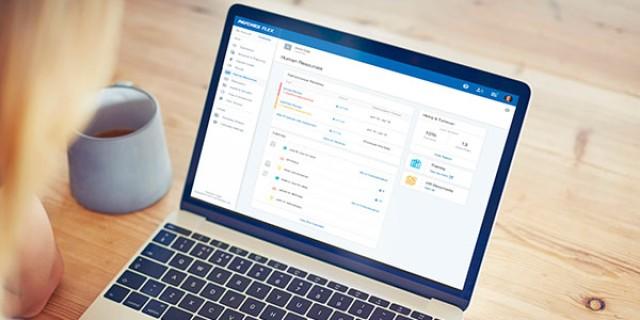As with any industry, HR is a strategic partner in managing talent, fostering culture, and enabling performance. Due to the hands-on nature of manufacturing, however, the human resources department faces distinct challenges that are unique to the industry. Safety protocols, employee engagement strategies, digital transformation, scheduling, and high turnover all present complex challenges considering rapid technological advancements and shifting workforce expectations.
Let's look at some of the roles, challenges, and trends for HR in the manufacturing industry.
The Role of HR in Manufacturing
Ensuring a productive and compliant workforce is the primary responsibility of HR. In a manufacturing environment, the role of HR focuses on worker safety, compliance, recruitment and turnover, employment laws, and other challenges of labor-intensive jobs. HR professionals in the manufacturing industry are responsible for:
- Shift Scheduling: Effective shift scheduling must account not only for staff coverage, but also for meeting production demand and empowering employees to maintain a healthy work-life balance. According to Amanda Gee, Talent Enablement Partner at Paychex, “HR in manufacturing must prioritize work-life balance, as it has a direct impact on employee safety. Manufacturing roles often involve repetitive tasks, heavy lifting, and extended periods of standing, which can take a toll on physical health. Additionally, the pressure to meet productivity goals and quotas can be mentally exhausting. When workers are fatigued, their reaction times slow and the likelihood of errors increases, raising the risk of workplace accidents.” Understanding when and how to schedule different types of shifts — fixed schedule, rotating schedule, split shifts, on-call shifts, etc. — can help reduce costs, increase productivity, and create a positive work culture.
- Employment Law Compliance: In addition to the logistics of shift scheduling, HR is also responsible for employment law compliance. This includes issues around overtime pay, employee classification, wage and hour compliance, and recordkeeping. For example, manufacturing companies may need to comply with FLSA, FMLA, OSHA, and the ADA — depending on factors such as employee count. Not all manufacturing employers are subject to every law; applicability can vary. In addition to complying with federal laws and regulations, it is essential for HR to closely monitor state and local employment laws, which can change frequently. The location where an employee lives and works plays a critical role in determining which laws apply. Furthermore, HR must consider how these various laws interact to ensure consistent and lawful employment practices.
- Recruitment, Onboarding, and Training Programs: Turnover is notably higher in the manufacturing industry. Steady turnover rates are common, which means that manufacturing companies need a consistent, reliable pipeline of qualified candidates to fill open roles. This can be a particular challenge for HR as the industry moves toward digital solutions that require additional skill sets. Strategic workforce planning is essential to ensure adequate staffing levels that support business growth and prevent production delays.
- Workplace Safety and OSHA Compliance: HR is responsible for creating and enforcing safety policies and protocols in compliance with the Occupational Safety and Hazard Act (OSHA). OSHA compliance aims to reduce the occurrence of workplace injury and illness and improve worker safety by providing equipment training, maintaining up-to-date protocols, and maintaining work areas. It’s also essential to monitor state-specific safety regulations. Staying up to date helps manufacturers avoid costly fines, penalties, and compliance risks.
- Employee Performance and Engagement: Meeting production requirements is a critical performance metric for manufacturing companies, directly impacting efficiency, output, and overall business success. It is HR's job to help monitor employee performance, set performance standards and goals, and create an engaging, employee-centric culture that boosts productivity. Common performance indicators in manufacturing include production output, equipment downtime, quality metrics, and on-time delivery rates. HR plays a critical role in supporting these outcomes by identifying skill gaps, forecasting workforce needs, delivering targeted training programs, and equipping managers with effective coaching and performance management tools.
7 Top HR Challenges in Manufacturing
HR challenges in manufacturing require creative solutions that consider the specific aspects of the industry. From finding skilled workers in an increasingly competitive market to keeping everyone safe on the factory floor, HR plays a pivotal role in sustaining a skilled, safe, and productive workforce in the middle of complex operations.
Here are seven of the most common challenges in the manufacturing industry:
Workforce Shortages
The manufacturing industry faces ongoing talent shortages driven by skill gaps, changing worker expectations, an aging workforce, and extended waitlists for vocational training programs. The shortage is particularly acute in skilled trades, where experienced machinists, welders, and technicians are retiring faster than new workers can be trained to replace them. Effective recruitment strategies that highlight career advancement opportunities, competitive compensation, and the variety of career opportunities in manufacturing are essential for attracting talent while creating workplaces that engage and retain skilled workers.
Employee Safety
Manufacturing inherently involves greater safety risks than many other industries. Jobs often take place in environments with heavy machinery, hazardous materials, and complex processes where a moment's inattention can have serious consequences. If an injury occurs on the job, costs extend beyond immediate medical bills to include workers' compensation claims, potential lawsuits, and productivity disruptions. To protect worker safety and comply with OSHA and state regulations, the HR department is responsible for developing workplace safety programs, staying on top of federal OSHA and OSHA state plan requirements, and cultivating a safety-centered culture, from onboarding to performance evaluation.
Technology Adoption
HR may be dealing with employees who fear losing their jobs to automation, while also trying to recruit tech-savvy employees who can operate increasingly sophisticated equipment. It's a delicate balancing act that requires clear communication about the company's technology strategy and how that will impact roles and job responsibilities. Technology adoption requires additional training and upskilling for current employees, and it may require new HR systems that can integrate with production software and provide real-time workforce data.
Skills Gaps
The rapid pace of technology innovation has also created skill gaps for many manufacturing companies. Companies may have workers who know traditional manufacturing inside and out, but they struggle with digital tools and advanced technologies that modern production requires. At the same time, new entrants to the workforce may be comfortable with technology but lack hands-on manufacturing experience. Bridging these gaps means developing comprehensive training programs for both groups, often while maintaining demanding production schedules.
Complex Compliance Requirements
In addition to employment law, tax compliance, and standard regulatory requirements, manufacturing companies must also navigate industry-specific requirements covering everything from workplace safety and OSHA compliance to environmental standards, labor relations, and union agreements. Standards may also vary from state to state. Companies with international locations face an additional challenge ensuring that they meet the local requirements for each location. It is the HR department's responsibility to stay current with frequently changing regulations while ensuring consistent implementation across facilities. Documenting policies and procedures is essential for supporting compliance efforts, helping companies prevent violations and mitigate the risk of penalties.
Compensation and Benefits
Compensation management in manufacturing can be complicated. Companies must offer competitive wages to attract skilled workers, but they also must consider cost control pressures and tight margins that impact profitability. When you factor in shift differentials, skill-based pay scales, various certifications, and collective bargaining, creating equitable pay structures can be challenging. Benefits packages add another layer of complexity and may include specialized components such as enhanced disability benefits, shift premiums, and comprehensive health coverage to address industry-specific risks.
International Operations
Running HR for a global manufacturing operation means coordinating across time zones, navigating different cultural expectations, and ensuring compliance with varying labor and employment laws. At the same time, employees may need cross-cultural training programs, facilities may need to adapt policies to local requirements, and each facility must maintain consistency with company policies and culture. Communication becomes even more critical when dealing with language barriers and different business practices around the globe.
Best Practices and Strategies for HR in Manufacturing
While the challenges are significant, there are proven strategies HR professionals can implement to address them effectively and support a resilient manufacturing workforce.
Here's how you can transform potential roadblocks into competitive advantages.
- Automate routine HR tasks. Use AI and automation to take care of routine, repetitive tasks so HR teams can focus on strategic initiatives. Automation can save time and provide critical data analysis to support better decision-making.
- Strengthen recruiting strategies. Expand your recruitment efforts to include nontraditional sources like military veterans, people making a career change, and underrepresented communities who may bring transferable skills. Partner with STEM-based high schools, community colleges, trade schools, and apprenticeship programs to build a pipeline of skilled workers. AI-powered recruiting tools can help you screen candidates more efficiently and identify qualified prospects from these broader talent pools.
- Create a culture of proactive risk prevention. Weave safety into the fabric of your culture. Establish regular safety training programs, conduct frequent workplace assessments, and empower employees to report safety concerns without fear of reprisal. Invest in modern safety equipment and technology and reinforce desired behaviors by recognizing teams that maintain excellent safety practices records. However, it's important to be mindful of potential unintended consequences of incentive-based recognition programs. For example, employees may avoid reporting incidents to preserve their team's eligibility for rewards or recognition.
- Embrace technology strategically. Clear change management communication plans help employees understand how new technologies will support rather than replace their roles. Create cross-functional teams that include both HR and operations personnel to ensure technology implementations meet real workplace needs.
- Upskill and reskill your workforce. Implement employee training programs to bridge the gap between traditional manufacturing skills and emerging technology requirements. Help current employees develop new skills by combining hands-on learning with digital literacy and creating clear career pathways that show workers how new skills can lead to advancement opportunities.
- Establish compliance management frameworks. To stay on top of ever-changing laws and regulations, create a compliance framework that includes compliance checklists, regular training updates, centralized documentation systems, and internal audits. In some cases, it may be helpful to work with a consultant or HR outsourcing provider to stay ahead of evolving requirements.
- Design competitive compensation and benefits packages. Conduct regular salary benchmarking studies, implement skill-based pay progressions, and offer benefits that address industry-specific needs like enhanced health coverage and flexible scheduling options. For unionized environments, maintain open communication channels and focus on collaborative problem-solving during negotiations.
- Develop standardized global HR practices. Create comprehensive cultural orientation programs for international assignments, establish clear communication protocols across time zones, and invest in local HR expertise in key markets. Implement global HR information systems that provide visibility and consistency across all locations and consider what must be adapted to specific locations.
The key to overcoming HR challenges in manufacturing is to strategically integrate technology, talent development, and compliance frameworks to build a resilient, future-ready workforce. These best practices can help you stay ahead of problems and create a culture of safety and empowerment.
Emerging HR Trends in Manufacturing
The industry is experiencing rapid change in everything from recruitment and onboarding to production management and equipment maintenance, and employees need support as they adapt to new ways of working. Many of the strategies discussed earlier are not just best practices but also part of broader trends reshaping the future of work.
Looking ahead, HR’s role in the manufacturing industry will increasingly involve:
- Supporting AI-driven operations by aligning workforce planning with technological innovation to streamline tasks.
- Facilitating digital adoption through change management and targeted training programs.
- Prioritizing holistic employee wellbeing, including mental health and flexible scheduling for work/life balance.
- Leveraging integrated HR technology makes it easier for HR professionals to focus on people management and employees rather than paperwork and administrative duties.
These trends are shifting manufacturing HR from a primarily administrative function to a strategic partner, but they're also introducing new challenges. Whether you're implementing new technology, developing training programs, or navigating complex compliance requirements, manufacturing HR support services can help you balance technological advancement with genuine people-focused strategies to stay ahead of the curve.










